10 Handcrafted Knives From the Early 20th Century That Collectors Prize
Handcrafted knives have long been admired for their quality and artistry. These knives are made by skilled artisans, who meticulously shape and sharpen each blade by hand, often using traditional methods passed down through generations. Unlike mass-produced knives, handcrafted ones reflect the time and care put into every detail, making them highly sought after by collectors. The beauty of these knives lies not just in their function, but also in the craftsmanship and materials that go into their creation.
This post may contain affiliate links, which helps keep this content free. Please read our disclosure for more info.
U.S. WWI Mark I Trench Knife
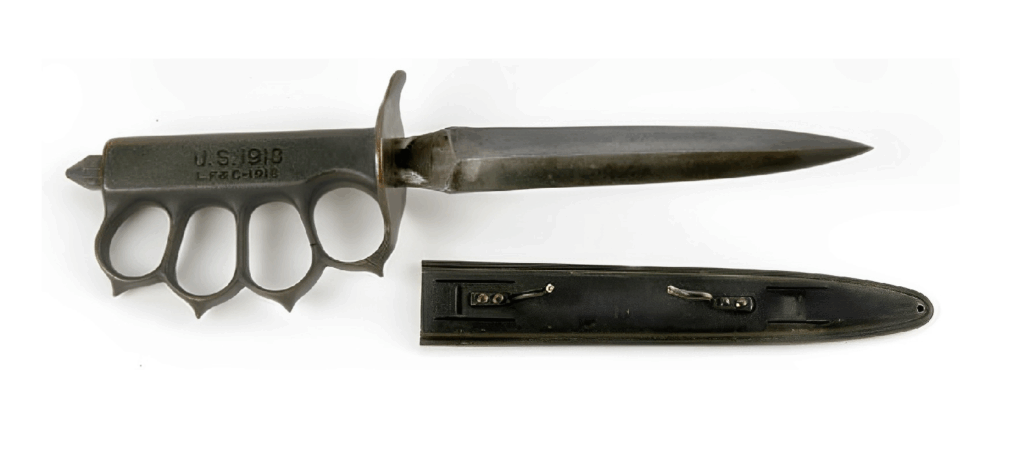
This trench knife was issued about 1918 for close-combat use in the First World War and features a triangular blade and knuckle guard. Original service-used examples in honest condition typically sell in the $800-$2,000 range. What makes it special is that it represents a shift from handmade blades to military application at a pivotal moment in history. Collectors value original markings, wartime provenance, and scabbard presence. The condition of the guard, blade tip, and overall finish matter a lot.
This model often bears maker or factory marks, serial or part numbers, and original leather or metal scabbard. A full set (knife plus scabbard plus documented unit usage) can command a higher price. The triangular blade was intended for thrusting in trench conditions, giving it a unique shape among collectible knives. Wear patterns from field use add to authenticity. When searching, verify that components are original and not later replacements to maintain value.
Early Japanese Handmade Kiridashi Knife (c. 1900-1920)
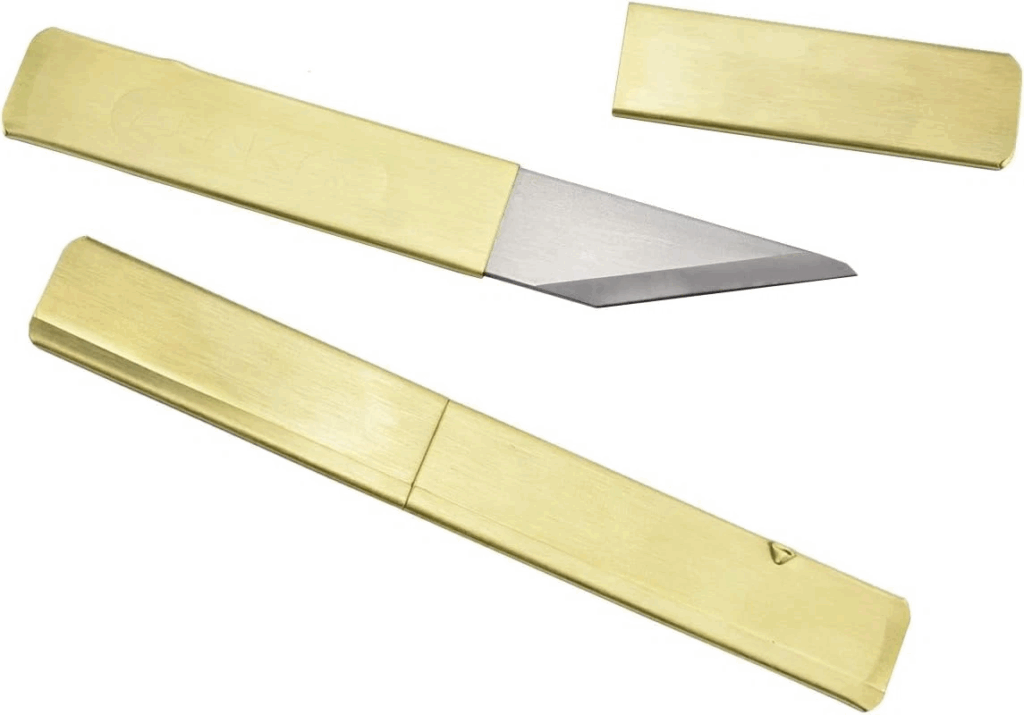
Produced around the turn of the 20th century, this Japanese kiridashi, a small utility or carpenter’s knife, is hand-forged, often from traditional Japanese steel and finished with natural handle materials. Prices for well-preserved examples often begin at $300-$600, though rare signed blades can fetch more. What makes this knife interesting is its blend of artisan workmanship, regional tradition, and the minimalistic design that lasting utility users still admire. Handle material such as magnolia wood and blade markings increases desirability. The size and form make it practical yet collectible.
For collectors, the forge-mark and condition of the edge and tang are key. Many examples were used deeply and show patina, which can add character. Scabbards or protective wooden covers may accompany them and add value. The origination region, for example Osaka or Kyoto, may be significant. These knives often appeal to people who appreciate functional artistry in edged tools.
William Scagel Hunting Knife
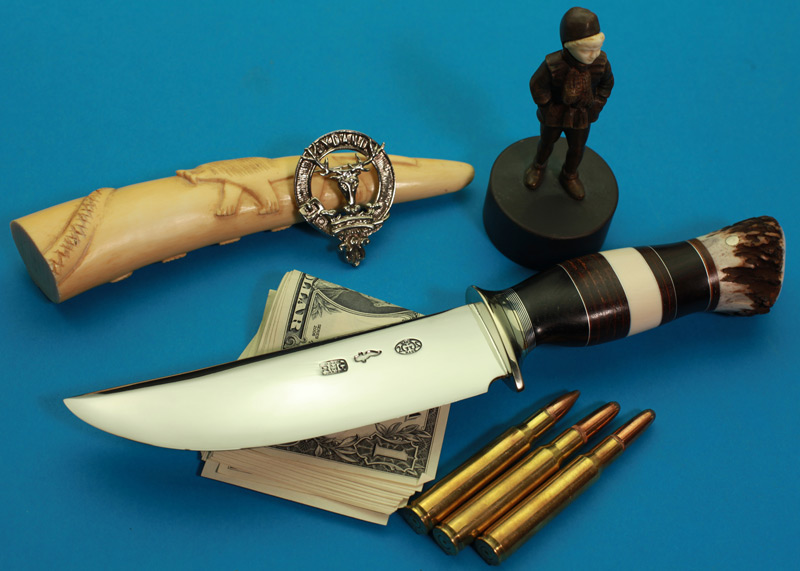
Introduced around the 1920s, this drop-point hunter by William Scagel features his distinctive half-stag, half-leather-washer handle design. Its rarity contributes to its collectible status-one variation is noted to be valued at over $15,000 in certain private collections. What sets this knife apart is the way it combined functional hunting ruggedness with the aesthetics of early custom knifemaking. Original Scagel blades had high-quality steel, crisp edges, and handles that aged gracefully. For a collector, provenance, such as a known hunting expedition use, adds a significant premium.
In further detail, the handle material and finish often tell the story of its maker’s workshop; the stacked leather washers and polished stag were hallmarks. Scagel sold his knives via premium retailers of the time, which adds to their heritage appeal. Many surviving examples show minor wear but intact condition, which helps with value retention. The blade length and shape varied, making some patterns more desirable than others. If you’re examining one, look for maker’s stamp, handle integrity, and matching sheath if original.
Early Custom Bowie-Style Knife (c. 1905-1915)
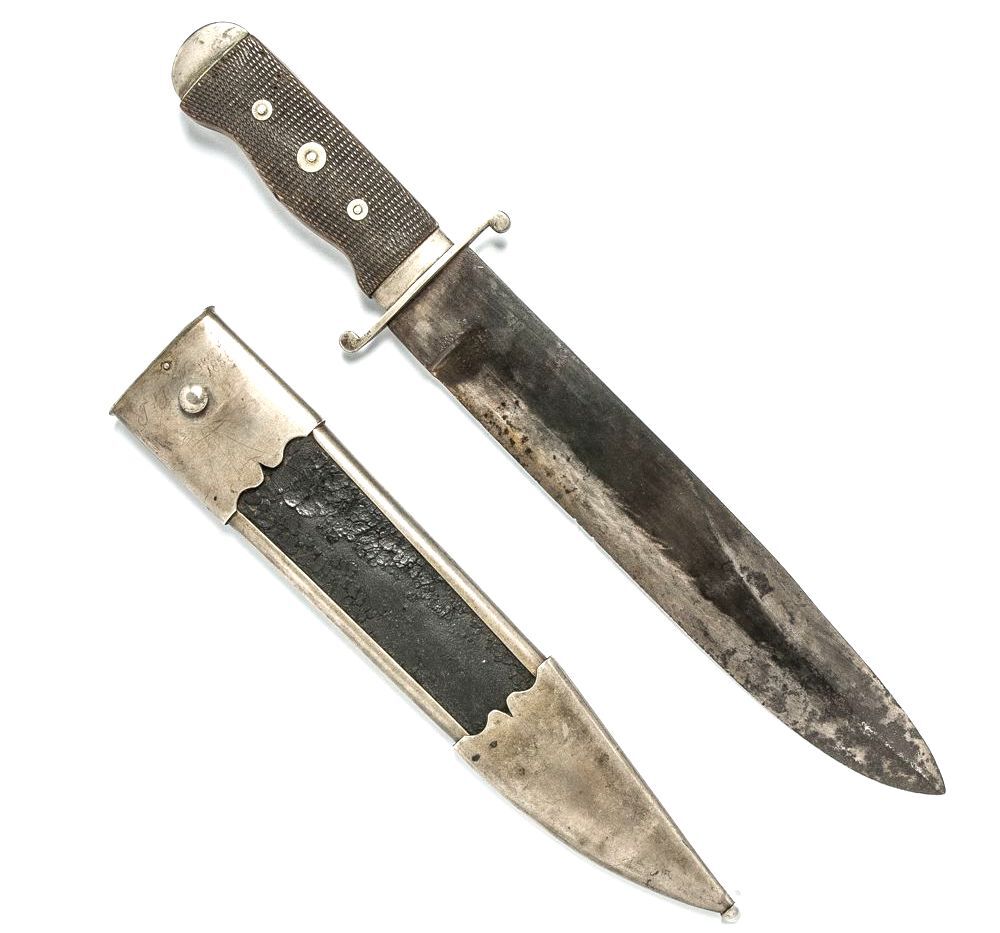
Made in the early 1900s, this handmade Bowie-style fixed blade showcases heavy carbon steel, full-tang construction, and often an engraved or ornamental guard. Collector value can range widely but pieces in good original condition often start around $1,000-$3,000 depending on maker and rarity. What draws collectors is the fact that each blade was individually forged, ground, and fitted by hand in a time when mass production was still taking hold. These knives often reflect regional variations in design, handle materials (bone, horn, exotic wood) and scabbard finish. The patina of the steel, wear on the handle, and signs of use can add to the story behind the piece.
In terms of specifics, many have maker’s initials or forging marks, though some are unmarked and valued for their style and era alone. The guard and handle materials often tell where the knife was made or used, e.g. frontier, hunting, survival. Sheaths made of leather with hand stitching increase desirability. For condition, original sharp edge and minimal repair work are preferred. Collectors often check for tight fit of blade to handle and original finish on metal parts.
Early Scandinavian Puukko Knife
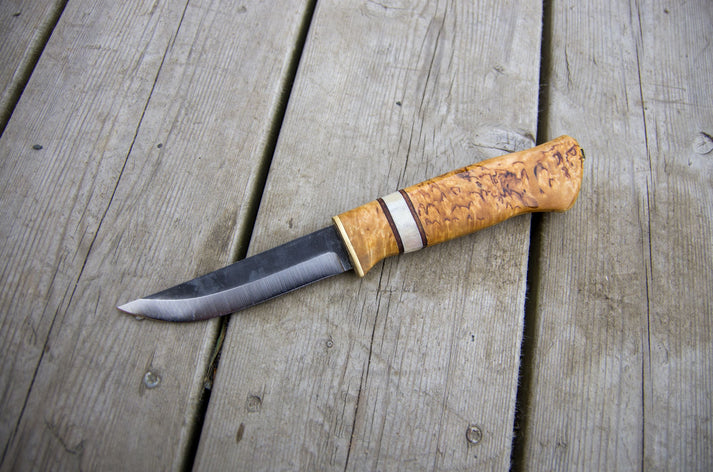
This Scandinavian hand-made puukko knife dates from the early 1920s and features a carbon steel blade with custom birch or curly maple handle. Typical market value for good condition is in the ballpark of $200-$500 depending on maker and provenance. Collectors like this type for its regional tradition, stylish simplicity and high utility. Handle material and original leather sheath are important factors. Blade finish and tight handle fit matter.
The puukko often comes from Finland or northern Sweden and may carry maker’s stamp or location mark. The handle shape is ergonomic and often uses native woods and sometimes antler ferrule. Sheath may be simple leather or birch bark bound. The knife’s length is modest, often 3-4 inches blade but the proportions and materials reflect strong craftsmanship. Many are still sharp and usable today, though as collectibles they are treated with care.
Early Custom Damascus Steel Knife

Coming from around 1915, this hand-made fixed blade knife uses damascus steel, layered high carbon steels forged into decorative patterns – with custom walnut or ivory handles. With good condition and maker’s provenance, values can vary from $1,500 to $4,000 or more depending on rarity. What makes it special is the combination of decorative steel patterning and early custom knife artistry. Handles with original hard materials like ivory, stag or exotic wood add extra value. The condition of the damascus pattern, absence of lost layers or corrosion spots, is important.
The blade often shows visible water-like pattern marks characteristic of damascus. Sheaths may be custom leather or possibly metal mounts if special commission. Maker’s initials, dated tang, and matching sheath heighten desirability. Repairs, re-handles, or heavy sharpening reduce collector value. Many of these knives were ‘display-worthy’ in their era but also functional, which appeals to collectors today.
Case XX 1920s Folding Knife
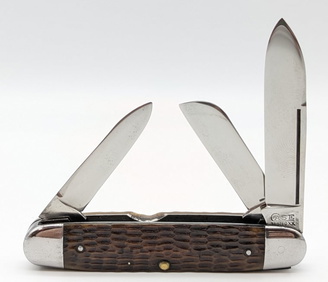
Produced during the 1920s, this folding knife from Case XX is known for its reliable craftsmanship and durable steel. With bone or mother-of-pearl handles and intricate bolsters, it’s a beautifully crafted example of American knife-making from this era. Depending on the condition and specific model, these knives are valued between $500 and $1,000. What makes this knife so attractive to collectors is the high level of workmanship and the rarity of early folding knives from Case XX. The knife was popular among hunters and everyday users for its practicality and sharpness.
This pocket knife was designed to be lightweight and easily portable, making it a favorite among those needing a reliable tool in the field. The engraving on the blades and handles is often a mark of the artisan’s skill, adding a layer of artistry to the functional design. For collectors, finding a model in original condition, especially one with a functioning spring mechanism, increases the value. The knife’s historical significance in the American cutlery industry contributes to its continued desirability. Today, vintage Case XX knives are some of the most sought-after in the collector’s market.
Buck 119 Special
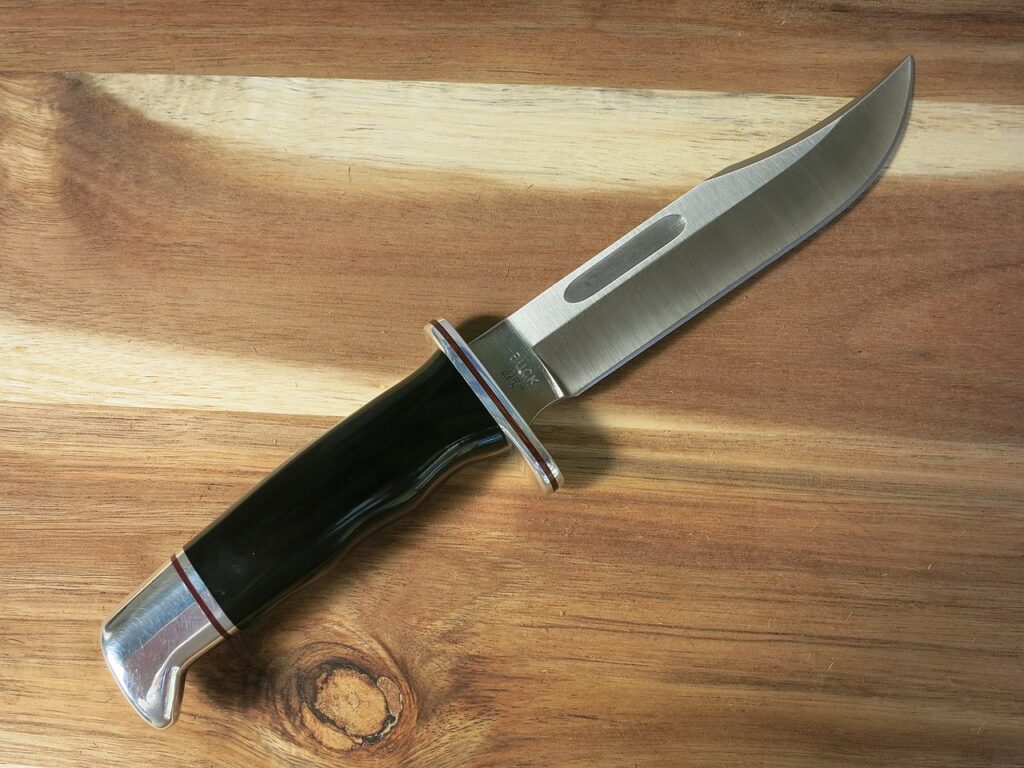
The Buck 119 Special, released in the 1940s, is one of the most iconic hunting knives in American history. Known for its straight-edge blade, thick leather handle, and solid construction, this knife was designed for hunters and outdoor enthusiasts. Collectors can expect to pay around $100 to $400, depending on the condition and any associated provenance. What sets this knife apart is its classic design, which remains popular among collectors and outdoor aficionados to this day. The durable stainless steel blade ensures it remains a top choice for practical use while still being a prized collectible.
The Buck 119 Special was originally designed as a hunting knife, offering a strong, sharp edge capable of handling various tasks. Over the years, the knife has become a symbol of American outdoor craftsmanship, with its simple, sturdy design still in production today. For collectors, older models, especially those with original sheaths and markings, hold a special appeal. The knife’s longevity and history make it an enduring piece in the world of handcrafted knives. The combination of utility and design ensures its continued relevance in the collector’s market.
Schrade Walden 1920s Folding Knife
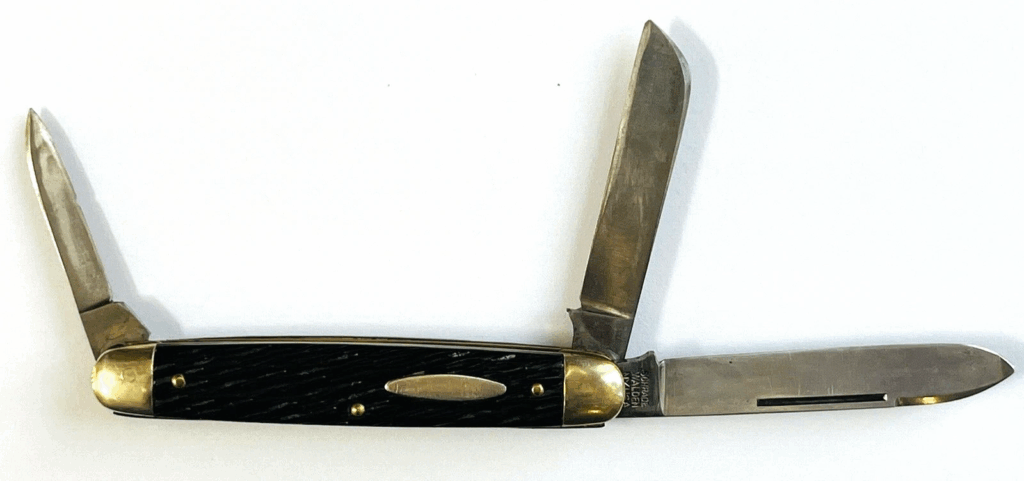
Schrade Walden was a well-known American knife company, and their 1920s folding knives are highly regarded by collectors. These knives feature a blend of high-carbon steel blades and durable wood or bone handles, making them sturdy and long-lasting. Today, they typically fetch prices between $200 and $700, depending on the specific model and condition. The craftsmanship and attention to detail in each blade, including the smooth operation of the folding mechanism, are what make these knives prized by collectors. Many of these knives have aged gracefully, with well-preserved blades and handles that maintain their charm.
What makes Schrade Walden folding knives so collectible is their history. As one of the prominent American knife manufacturers during the early 20th century, Schrade Walden knives represent a crucial period in American cutlery. Collectors look for certain features, such as original branding and well-maintained components. Additionally, the patina developed over years of use adds to the appeal. Today, these knives hold nostalgic value and are seen as iconic representations of vintage American craftsmanship.
Laguiole Knife
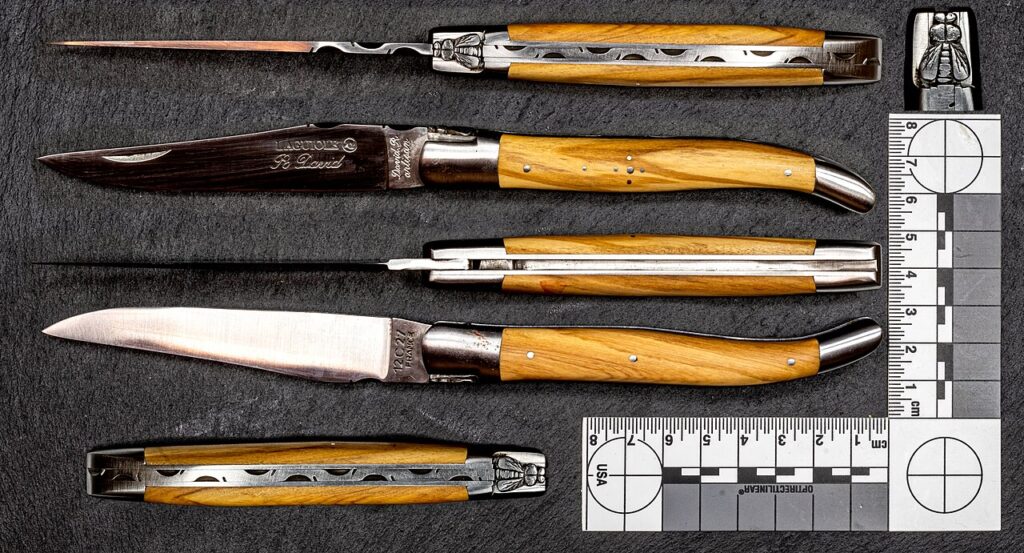
The Laguiole knife, originating in the village of Laguiole, France, is known for its elegant design and functional blade, often adorned with a bee emblem. Dating back to the early 1900s, this knife was originally crafted as a shepherd’s tool, making it not only a piece of craftsmanship but also a practical item. Depending on the model and the quality of the craftsmanship, the price can range from $300 to $1,500. The hand-forged steel and wooden handles make it both beautiful and durable, while the intricate details of its design make it a coveted collector’s item. Laguiole knives are renowned for their craftsmanship, making them a sought-after piece for knife enthusiasts worldwide.
The distinct shape of the blade and the elegantly curved handle, often made from materials such as horn or wood, make the Laguiole knife easy to recognize. These knives were crafted with both form and function in mind, designed to serve as everyday tools for farmers and shepherds, yet still capable of impressing with their artistry. The quality of the blade steel, combined with traditional handcrafting methods, ensures that these knives last for generations. Today, Laguiole knives are often collected for their beauty, historical value, and connection to French heritage. Their unique designs and high-quality materials continue to make them an exceptional piece in any collection.
This article originally appeared on Avocadu.
